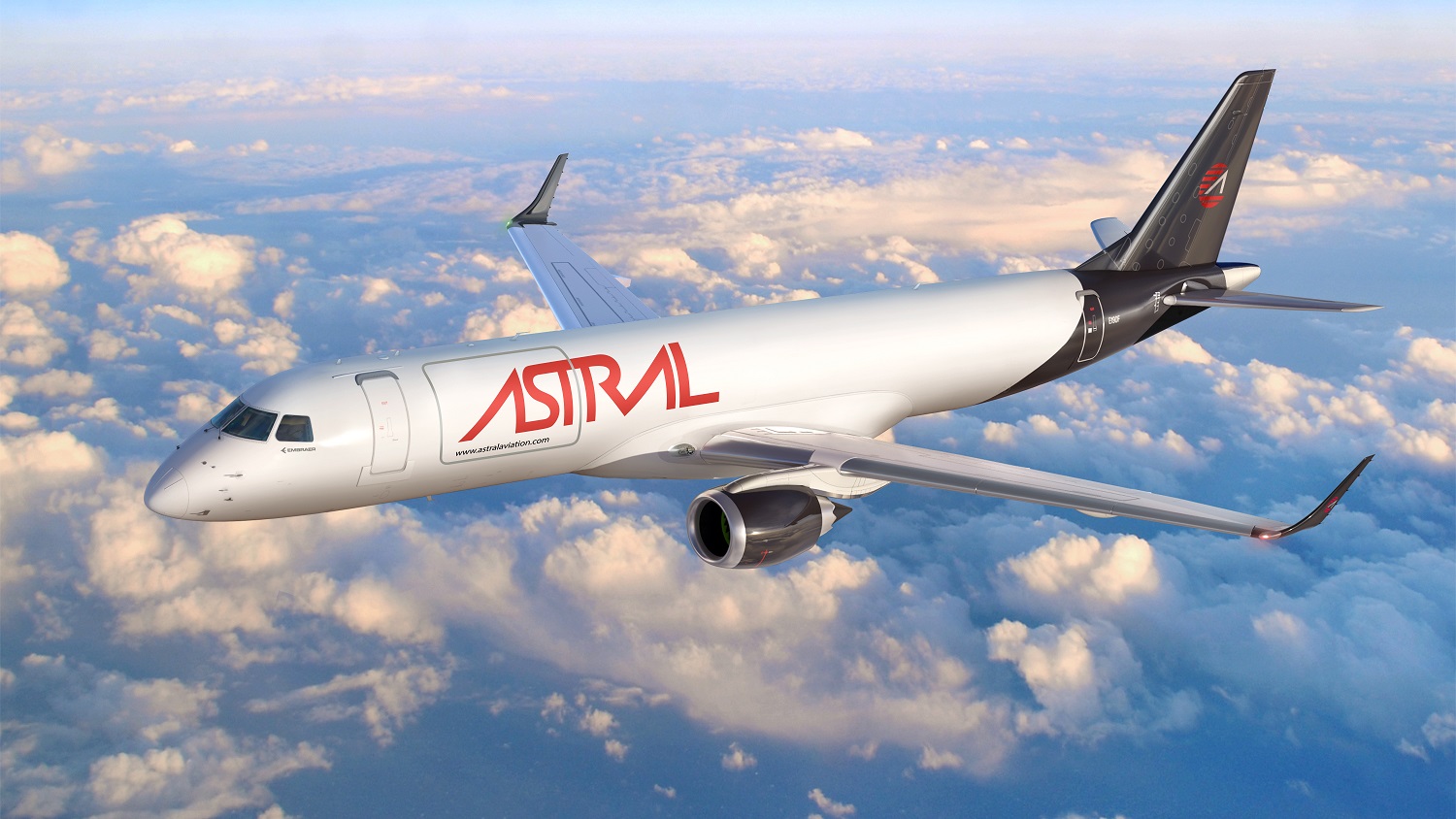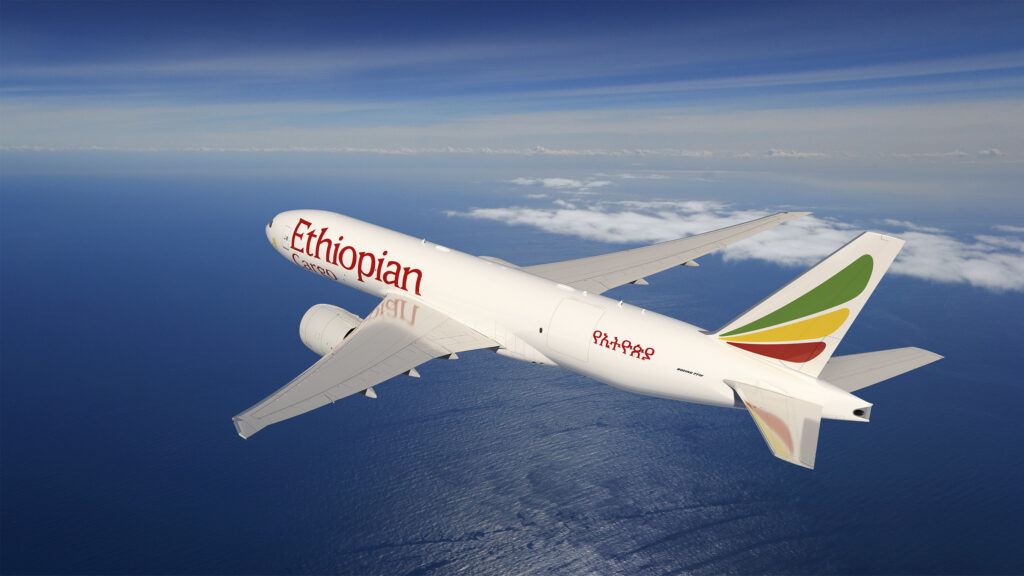African air cargo returns to growth as carriers look to the east
03 / 05 / 2024

Photo: Embraer
The African airfreight market has had a difficult couple of years, but there are now signs of improvement and the sector is positive about the outlook.
IATA figures show that last year African carriers saw cargo demand decline by 1.8% year on year, following on from what was a weak 2022.
The continent was suffering from the effects of inflation in Europe and the strength of the US dollar, which curtailed consumer spending.
However, the situation does seem to be improving and over the first three months of the year, IATA says that demand increased by 16.8% year on year.
Sanjeev Gadhia, chief executive of Nairobi-based freighter operator Astral Aviation, says that e-commerce has been leading the improvements while South Africa and Nigeria, the continent’s biggest economies, are showing signs of improvement.
Kenya Airways head of cargo commercial Peter Musola agrees that the Nigerian economy is on the up and that there are early signs of improvement in the South African economy, although there is some way to go until air cargo demand reaches previous levels at the latter.
It is not just airlines that have noted improving air cargo demand into Africa this year.
Dirk Goovaerts, head of continental Europe, Middle East, and Africa, and global cargo chair at Swissport International, which handles more than 300,000 tons of cargo each year at facilities in Algeria, Kenya, Ghana, South Africa and Tanzania, says its volumes have been “very strong” this year.
Goovaerts says that as a result of its recent success, the company is investing in its warehouse infrastructure to match that growth.
“For example, we are reviewing a major upgrade for our facilities in South Africa – one of our global core markets for air cargo,” he says. “We are also constantly investing in modernising and electrifying our ground support equipment fleet.”
He adds: “Additionally, we are always looking for opportunities to further increase our geographical footprint and support our customers at even more airports.”

Dirk Goovaerts, Swissport. Source: Swissport
Looking east
China is also beginning to turn its attention back to the continent, Gadhia says.
“The Chinese took a step back from Africa as they had their own economic challenges and now some of those challenges are reducing and we are seeing more opportunities coming in,” he says.
Astral has a keen interest in developments in China as the carrier has been looking east – as opposed to Europe – as it looks to generate new demand streams.
Gadhia points out that the carrier recently launched flights into Abu Dhabi in partnership with Etihad Cargo, which will link up with the Middle Eastern airline’s (and partner SF Airlines) flights into Ezhou in China.
Meanwhile, Astral also has an interline agreement with China Cargo Airlines on flights into China via Johannesburg and also with China Southern from Nairobi.
It also has its own Boeing 767 freighter flights into Hong Kong and a partnership with Cathay Pacific.
Explaining the shift away from Europe, Gadhia says: “We have seen a significant decline in airfreight volumes from Europe to Africa.
“Europe is the home for our perishables from Africa but the problem is that while you can fly full from Nairobi to Europe daily, twice daily, on the return there is not enough freight.”
He says the decline in demand is due to the strong Euro.
“Typically, Europe used to play a big role in e-commerce but that has moved to Asia,” he says.
“You see a situation where there is a potential decline in airfreight volumes from Europe to Africa compared to what it was before Covid, with the exception of Pharma and any high-value consumer goods, and there is even the potential for that to shift to China, South Korea, India and Vietnam.”
He says that Astral is examining the potential of using its Boeing 767 freighters to reach some of these markets. The airline hopes to add a further two 767 freighters to its existing aircraft later this year.
He explains that Astral recently gained its Chinese approval and hopes to soon start flights to Guangzhou from Nairobi.
Gadhia says that capacity is another challenge for the African airfreight market as bellyhold operations still lag behind pre-Covid levels, with the exception of the main hubs such as Nairobi, Addis Ababa, Johannesburg, Lagos, Cairo and Casablanca.
“If you look at the other markets there is not enough belly capacity there – that is where the freighters play an important role.”

Source: Boeing
E-commerce investments
Ethiopian Airways has also been looking to capitalise on the growing e-commerce demand from China.
In March, the carrier group launched a new e-commerce logistics facility at Addis Ababa Bole International Airport.
Located inside the Ethiopian Cargo & Logistics premises at the airport, the facility is dedicated to e-commerce, mail and courier logistics services.
The facility will offer a range of services including consolidation, deconsolidation, sortation, repacking and labelling. The technology and systems within the facility mean that the airline’s customers can now track and trace their shipments easily.
Ethiopian Airlines Group also noted that the facility is “aimed at bridging logistical gaps and positioning Addis Ababa, Ethiopia, as the cross-border e-commerce logistics hub for Africa and beyond”.
Kenya Airways has also been looking east, says Musola. He explains this isn’t necessarily a reflection of weaker demand to Europe, but just that there are more growth opportunities in the Middle East and Asia.
The carrier has this year expanded its freighter fleet through the addition of two Boeing 737-800 freighters to complement its existing two 737-300 freighters.
Musola says the new aircraft offer a greater range – of around six or seven hours flying time – and are being used on services to the Middle East and India, specifically Sharjah and Mumbai.
The second -800 freighter was added at the start of April and the carrier is planning on adding services to Riyadh and Jeddah, as well as an additional point in India.
In line with the additional freighter capacity, the airline has also been expanding its Nairobi facilities to handle special cargo, for instance perishables, pharmaceuticals and high-value goods.
On the topic of a changing focus, Musola says: “Kenya has historically been focusing on Europe but the Middle East is really a next frontier market.
“In fact, the market is growing at a double-digit rate every year and this is also giving a fantastic opportunity to the Kenyan exporters.”
Exports from Kenya to the Middle East are around 70% meat and 30% fruit, vegetables and flowers, he says.
“Demand into Europe has a much smaller growth [than the Middle East and Asia], which is quite okay, but there is a lot of competition,” Musola explains.
“Kenya competes with The Maghreb on airfreight exports to Europe and that region is in closer proximity to Europe, so their airfreight costs are much lower.
“We also have competition from some of the South American countries when it comes to flowers.
“These countries are really focussing on Europe so our horticultural centres have the intention of maintaining Europe as a major market, but we also are looking at diversifying our opportunities into the Far East.”
The carrier has in the past spoken about adding Boeing 767 freighters to its fleet to expand its reach to the Far East, although Musola says there are no solid plans to add widebody aircraft at present.

Source: Markus Mainka/ Shutterstock.com
Sea-air demand driver
Musola says another driver of demand this year has been sea-air volumes out of the Middle East as shippers look to avoid vessels taking the longer route around the Cape of Good Hope to reach west Africa due to missile attacks in the Red Sea.
He points out that Kenya Airways’ 737-300 freighters are used on intra-Africa flights and therefore reach many destinations in the continent.
“This has been a major modal shift of cargo from sea to airfreight and one of the regions impacted is the west coast of Africa. KQ is already touching into those end points in Freetown, Conakry, Monrovia, Accra.
“Ideally, those ships would be going through the Suez, around the continent and into that part of west Africa but for now it is kind of sealed off.
“A lot of the exporters in the Far East are transferring the cargo to the Middle East by seafreight and then from there it does the airfreight hop into the continent.”
The trend has also been noted by Swissport’s Goovaerts: “We continue to expect a strong year for air cargo in Africa.
“There are many factors that play into this, but the ongoing difficulties for ocean freight to cross the Red Sea are a major accelerator for air cargo in Africa.”
Musola adds that Kenya Airways is looking into starting freighter services into Dubai World Central to help meet this demand as well as to cater for the previously mentioned export growth.
Other areas of growth in Africa come from the opening up of new markets, such as Somalia where Kenya Airways flies to Mogadishu, and the transport of electoral materials as many countries on the continent gear up for presidential elections.
However, he adds: “The geopolitical situation on the continent still remains worrisome.
“We have the situation in Sudan and some of the west African countries. This limits how you route your flights.
“We still have a couple of airspaces closed out in the continent and this increases our operational costs and is a major concern within the continent. We are hopeful that we will be able to have these situations resolved soon.”














